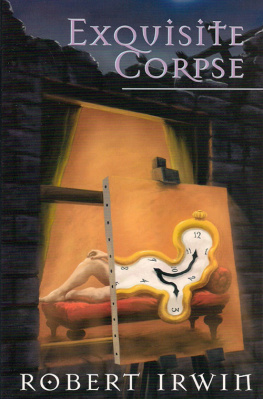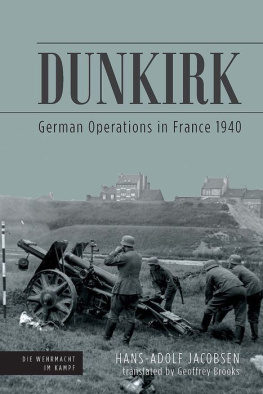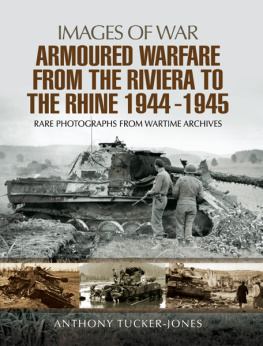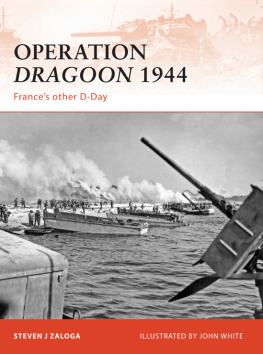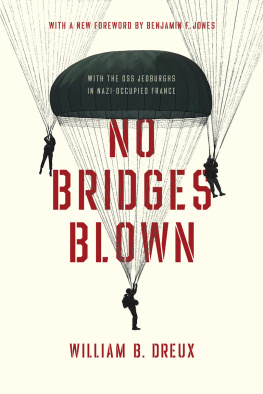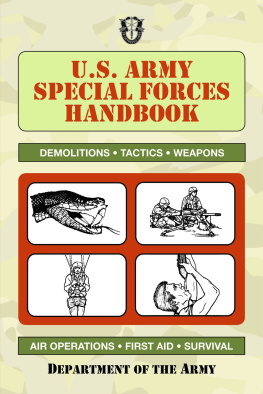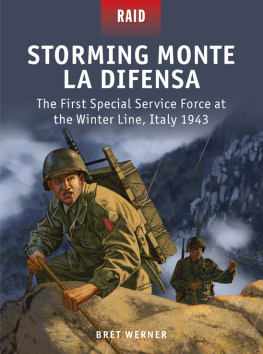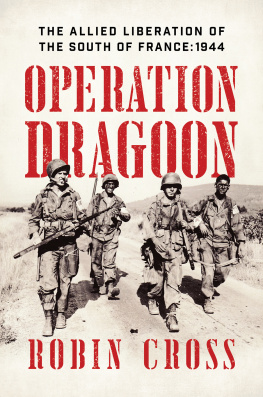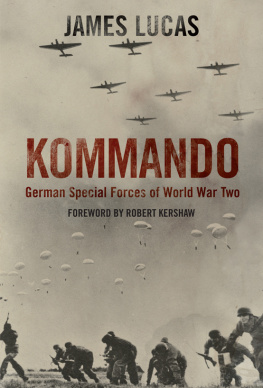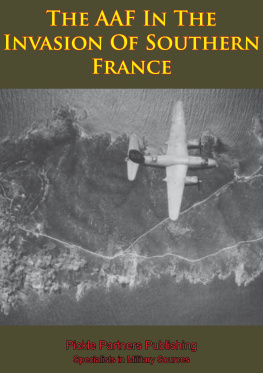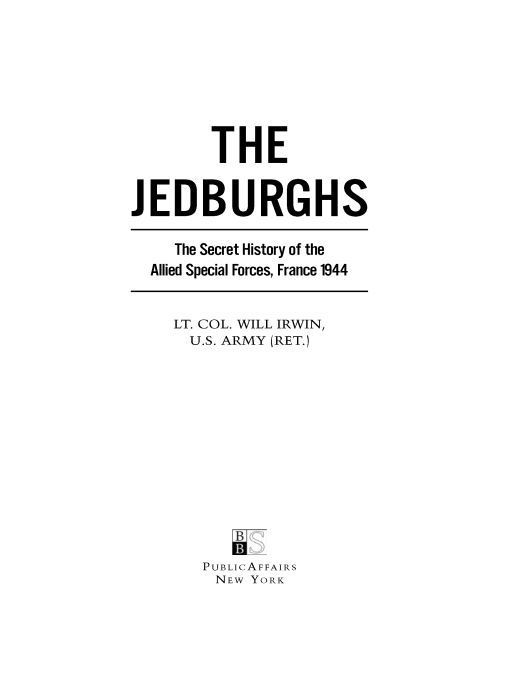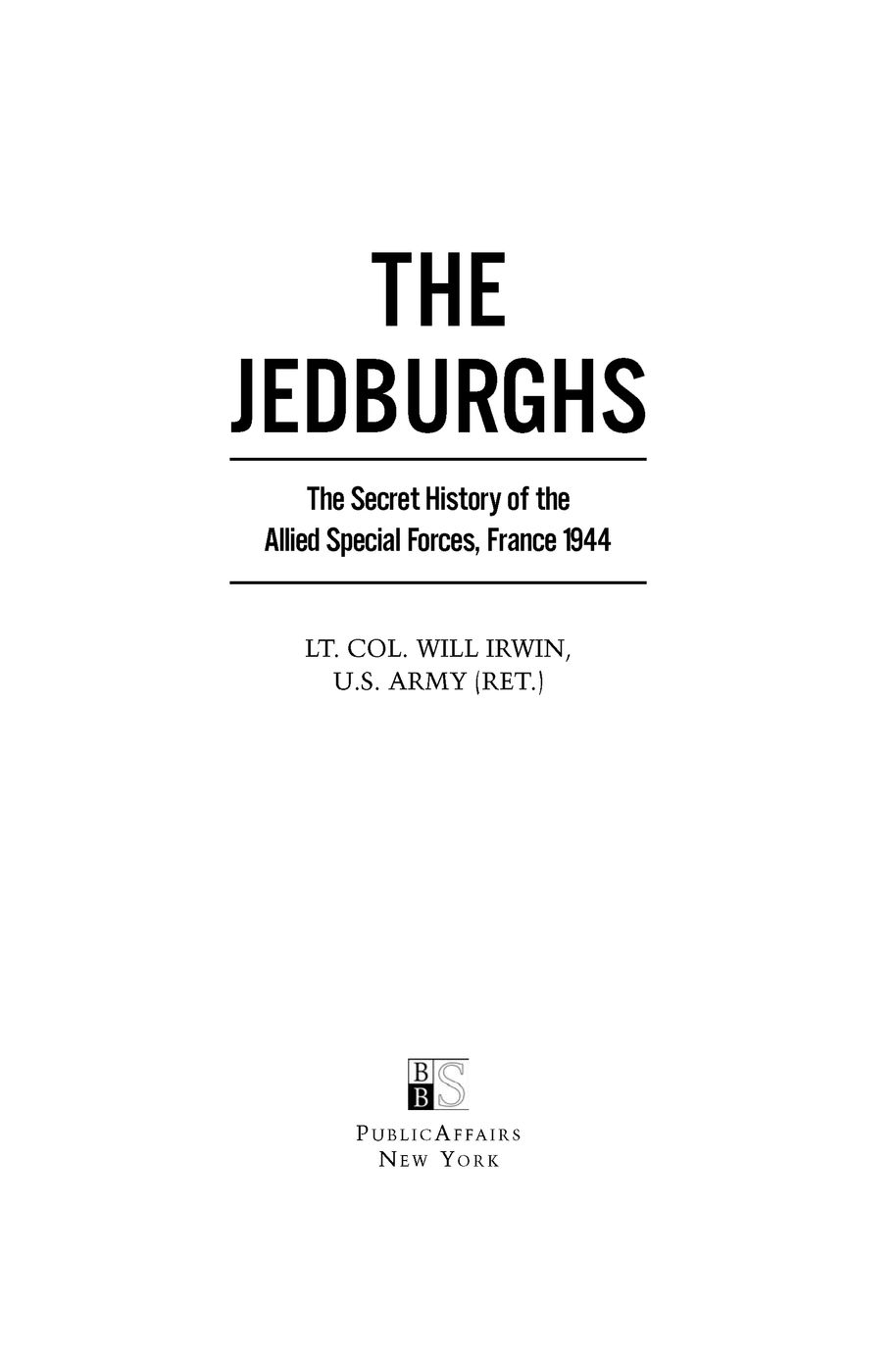Table of Contents
This book is dedicated to the nineteen Jeds lost in the campaign for France.
For always, no matter how powerful ones armies, to enter a conquered territory one needs the goodwill of the inhabitants.
Niccol Machiavelli, The Prince, 1513
Any nation that uses [partisan warfare] intelligently will, as a rule, gain some superiority over those who disdain its use.
Karl von Clausewitz, On War, 1833
The difficulties [for an invader] are particularly great when the people are supported by a considerable nucleus of disciplined troops. The invader has only an army: his adversaries have an army, and a people wholly or almost wholly in arms... even the noncombatants have an interest in his ruin and accelerate it by every means in their power.
General Baron de Jomini,
A Treatise on the Art of War, 1838
A NOTE ON MILITARY UNITS
The following table gives readers an idea of the organization and typical authorized strength of the various ground force unitsboth Allied (American, British, Canadian, and Free French) and Germanreferred to in the book. The composition column in the table shows only the major combat elements at each level of organization; in addition to these, organizations at the division level and above also had additional artillery, engineer, signal, medical, or other specialty units. As the weeks and months passed following D-Day, virtually all units operated below their authorized strength, even with replacements. Many German units, in particular, were at a fraction of their authorized strength by the late summer of 1944.
Throughout the book, specific unit designations are shown following conventional U.S.-European practice: Arabic numerals for divisions, regiments, battalions, and platoons (e.g., 2nd SS Panzer Division, 16th Infantry Regiment); spelled-out numbers for field armies (e.g., French First Army, Third U.S. Army); Roman numerals for corps (e.g., VII Corps); and letters for companies (e.g., Company B).
CHART 1
| Organization | Typical Composition | Typical Strength |
|---|
| Army Group | Two or more field armies | 200,000-300,000 |
| (Field) Army | Two or more corps | 100,000-150,000 |
| Corps | Two or more divisions | 25,000-50,000 |
| Division | Three or more regiments, brigades, or combat commands | 10,000-15,000 |
| Regiment, Brigade, or Combat Command | Two or more battalions | 1,000-3,500 |
| Battalion or Squadron | Four to six companies | 400-1,000 |
| Company or Troop | Three to five platoons | 100-250 |
| Platoon | Two to four squads | 16-50 |
| Squad | 8-12 |
PROLOGUE
A lone bomber climbed slowly into the darkness from the airfield in Northamptonshire, in central England. It was a little more than an hour before midnight on July 8, 1944, a warm Saturday night. To anyone outside at that hour in the nearby village of Harrington, the B-24 Liberator looked like hundreds of others based throughout Britain; but residents of Harrington knew that nothing at this particular airfield could be taken at face value. Something strange went on there, though no one could say exactly what. Planes took off at about this timeor even lateralmost every night, and they always returned before dawn. Nearly always, the planes were silhouetted against a moonlit sky and bore no telltale running lights. Anyone whod paid any attention at all during the past two years knew that the Americans stationed at every other base in England flew only daytime bombing missions.
The young airmen of the U.S. Eighth Air Force who worked at the basethey called themselves Carpetbaggerswere friendly enough. They often spent their free time drinking the weak wartime beer in local pubs, and many had accepted invitations from villagers to come by for a home-cooked meal. But if asked about what they did, the young men grew tight-lipped and evasive. Once it became clear that their work was a military secret, people stopped askingas if they knew of some flaw in your familys past, but liked you and respected you enough not to bring it up.
Closer examination of the bomber lifting off at 2240 hours that night would have revealed that it was no ordinary Liberator. This B-24 was cloaked in a non-reflective black paint. Gun turrets had been removed from the nose, waist, and belly of the fuselage, leaving two gun mountingsone in the top of the fuselage and one in the tail. The crew had been reduced from the standard ten men to eight. Bomb racks had been stripped from the aircraft and replaced by specially designed racks for carrying supply containers; both the racks and the containers were of British manufacture. A plywood trapdoor had been fitted over the hole in the floor where the belly gunners turret usually wasa hole meant to allow parachutists to exit the aircraft, one at a time. The air force called it the Joe hole, referring to their universal name for jumpers.
Advanced avionics had been added to the plane, as well as a primitive friend or foe identification system. There also was advanced radio equipment and an early radar device designed to help prevent the plane from hitting the ground when flying at low altitudes. Oxygen bottles had been removed; this plane wouldnt be flying high enough to need them. The only light left to burn continuously once a mission was underway was a small one in the navigators compartment that gave off an eerie green glow, providing just enough illumination for the navigator to read his charts.
Seated on the airplanes plywood floor were three young menparachutists who would jump on the first pass over the drop zone. The leader of the team was a tall, handsome twenty-nine-year-old American army captain, an aircraft armaments officer before volunteering for duty with the Office of Strategic Services. Bernard Knox, a naturalized citizen of the United States, was a native Briton, a Cambridge graduate, and a veteran of the Spanish Civil War. His second-in-command, a French captain named Paul Lebel, had come from a Free French infantry regiment in North Africa, and the third member of the team, Sergeant Gordon Tack, was a British army radio operator assigned to that countrys Special Operations Executive. All three men wore battledress uniform with a winged patch on the upper sleeve. In the center of the patchs spread white wings was a red circle with the letters SF, for Special Forces, in light blue.
Their equipment was an odd mixtureBritish radios, American M1 carbines and .45-caliber pistols, and British compasses. The men wore canvas money belts stuffed with hundreds of thousands in French francs and a smaller amount of American dollars. Over their uniforms they wore standard British jump smocks, their pockets crammed with code books and radio crystals. On their heads they wore British parachutist helmets, on their feet American jump boots.
Positioned above the bomb bay were twelve Type C containersman-sized tubular-shaped canisters filled with weapons and other equipment for the resistance fighters. These would be dropped during the aircrafts second pass over the planned drop area, followed by twelve more from a second B-24. The containers were stamped from sheet metal, with reinforcing ribs on the surface. Each had an opening which ran the length of the container and was fastened closed with three latches. A small compartment at one end held a parachute. Protruding from a hole in the compartment was a static line that was fastened to a bar in the aircrafts interior; when the container left the aircraft the line would pull out the parachute. Carefully packed in the larger main compartment was a standard load of submachine guns, ammunition, grenades, explosives, radios, boots, and other gearthe impedimenta of guerrilla warfare.


